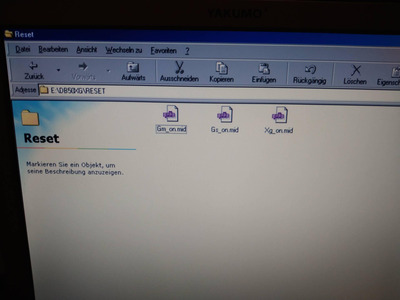First post, by Demolition-Man
Hi,
I found an affordable combination of CT1740 sound card and Yamaha DB50XG daughterboard. After initial problems with the sound card, it now works quite well. Only the amplifier seems to be partially defective. But it also works without it. My question is about the daughterboard, under Windows 98 SE. Under real DOS 6.2 everything on General MIDI works, with the usual known SB16 problems. It also works initially on Windows. There aren't many MIDI games there either. I have 3D Ultra Pinball and Age of Empires 1, the latter of which plays the music via CD after the menu. Then I have a bunch of MIDI files that I play back with the media player. Now it gets complicated, the MIDI sound changes at some point. I also have the AOE Theme as MIDI file for example. But then it sounds like coming exclusively from the piano,but not everytime. Also Drums are possible.^^ After a certain amount of time, or after playing, I have no idea how many MIDI files, I'm at a loss. The only thing that helps is a restart. I read something somewhere about Windows software for the daughterboard and something about a reset? Does anyone know what I mean? A problem with the media player? Any setting in Windows 98? Maybe the daughterboard is just defective, but as I said, it always works under DOS. I'm grateful for any help! Thanks!
Edit:
I'm currently testing the General MIDI DOS Games under Windows 98. The address of the sound card is identical there. No change in sound so far. Maybe just with the media player?
Edit2: Freeze after 3-4 Minutes in Duke3D with MIDI. Mhmhm.

